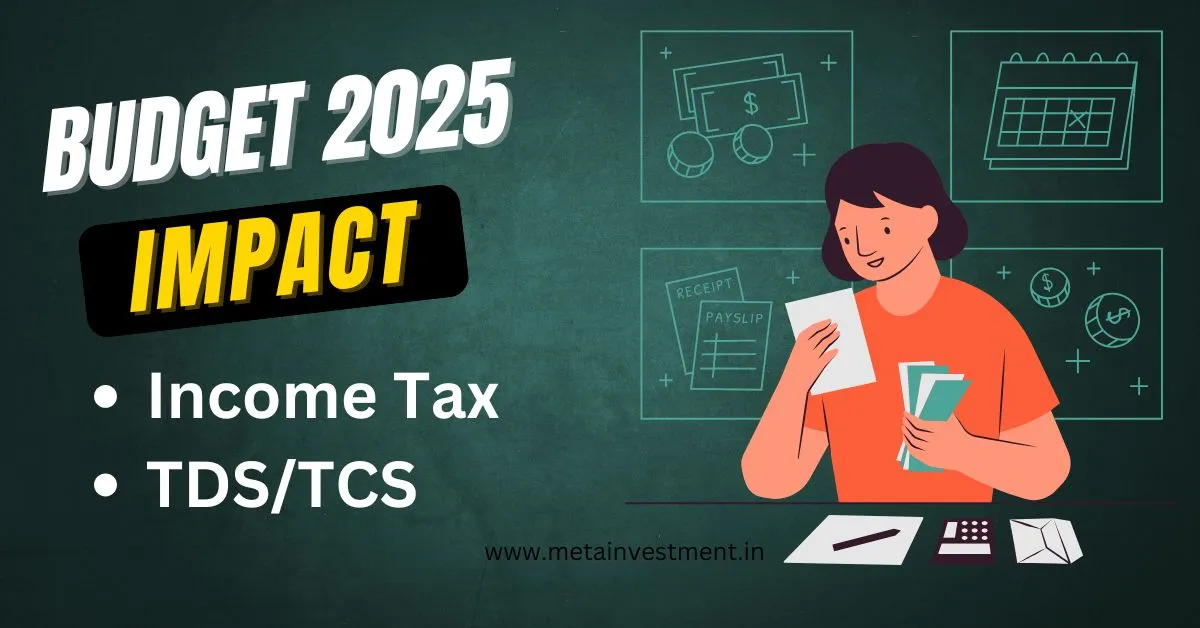This year’s budget placed a significant emphasis on providing relief to income tax payers, a move that resonated strongly with individuals across various income brackets. This focus manifested in several key changes, primarily aimed at simplifying the tax regime and reducing the tax burden on individuals. The government’s decision to prioritize tax relief can be seen as an effort to boost disposable income, stimulate consumer spending, and potentially encourage greater compliance.

A key feature of this year’s budget was the government’s decision to provide income tax relief. These changes to tax slabs apply to the new tax regime. Unfortunately, there were no changes or increases in limits for the old tax regime. The standard deduction for salaried individuals has been increased to ₹75,000. Additionally, resident individuals can claim a rebate of up to ₹60,000 under Section 87A.
What is Section 87A?
Section 87A of the Income Tax Act in India provides a tax rebate to resident individuals. Essentially, it’s a way for lower-income taxpayers to reduce their tax liability. It’s a rebate, not a deduction or exemption. A rebate reduces the amount of tax you owe after calculating your tax liability. It’s designed to provide relief to those with lower incomes.
Key Points
-
Eligibility: This rebate is available only to resident individuals. Non-residents and other entities (like companies or HUFs) cannot claim it.
-
Income Limit: The rebate is available only if your total taxable income (after deductions under various sections like 80C, 80D, etc.) does not exceed a certain limit. This limit is subject to change by the government. For the financial year 2025-26 (assessment year 2026-27), the income limit for claiming the rebate is now modified to ₹12,00,000 under the new tax regime.
| Income Tax Slabs | Tax Rate |
| Upto INR 4 lakh | Nil |
| INR 4-8 lakh | 5% |
| INR 8-12 lakh | 10% |
| INR 12-16 lakh | 15% |
| INR 16-20 lakh | 20% |
| INR 20- 24 lakh | 25% |
| Above INR 24 lakh | 30% |
Effectively individuals earning income up to ₹12 lakh will be paying zero tax. Check below table to see how this results in tax savings for various income ranges.
| Total annual income (INR) | Tax Savings as per Budget’25 (INR) | % of total income |
| | Per annum | Per month | |
| 8,00,000 | 30,000 | 2,500 | 4% |
| 12,00,000 | 80,000 | 6,667 | 7% |
| 20,00,000 | 90,000 | 7,500 | 5% |
| 24,00,000 | 110,000 | 9,167 | 4% |
| 50,00,000 | 110,000 | 9,167 | 2% |
*Source – Budget Documents, Government of India & Old Bridge workings
Rationalization of TDS/TCS
Union Budget also brought some welcome news for taxpayers, particularly concerning Tax Deducted at Source (TDS) and Tax Collected at Source (TCS). The government has proposed several rationalization measures aimed at simplifying compliance, reducing the burden on small taxpayers, and improving clarity.
Simplifying TDS: Fewer Rates, Higher Thresholds
One of the major pain points for taxpayers has been the complex web of TDS rates and thresholds. The budget proposes to streamline this by reducing the number of rates and raising the thresholds above which TDS is deducted. This means fewer transactions will be subject to TDS, easing the compliance burden, especially for small taxpayers who receive small payments.
Increased Limits for Senior Citizens and Rent Payments
Senior citizens are set to benefit from a significant increase in the TDS deduction limit on interest income. This limit is being doubled from ₹50,000 to ₹1 lakh. Similarly, the annual TDS limit on rent payments is being increased substantially from ₹2.40 lakh to ₹6 lakh. These changes will significantly reduce the TDS burden on senior citizens and those receiving rental income, allowing them to manage their finances more effectively.
Easing TCS on Remittances
The budget also addresses TCS on remittances under the RBI’s Liberalized Remittance Scheme (LRS). The threshold for TCS collection is proposed to be increased from ₹7 lakh to ₹10 lakh, providing some relief to those making foreign remittances. Even more welcome is the proposal to remove TCS on remittances for education purposes when the funds are sourced from a loan from a specified financial institution. This will significantly ease the financial burden on students pursuing education abroad.
Goods Transactions and Non-PAN Cases
Currently, both TDS and TCS are often applied to transactions related to the sale of goods, creating compliance difficulties. The budget proposes to eliminate TCS on such transactions, simplifying the process for businesses. Furthermore, the higher TDS deduction rate will now apply only in cases where the recipient doesn’t have a PAN card. This incentivizes PAN compliance and reduces unnecessary TDS deductions.
Decriminalization of TCS Payment Delays
Following the decriminalization of TDS payment delays up to the due date of filing the statement in July 2024, the budget proposes to extend the same relaxation to TCS provisions. This is a welcome move that provides parity and reduces the risk of legal action for minor delays.
Impact and Benefits:
These rationalization measures are expected to have a positive impact on taxpayers:
-
Reduced Compliance Burden: Fewer TDS rates and higher thresholds will simplify compliance for both deductors and deductees.
-
Increased Cash Flow: Higher thresholds and the removal of certain TCS provisions will improve cash flow for small taxpayers and businesses.
-
Greater Clarity: The changes aim to bring greater clarity and uniformity to the TDS/TCS regime.
-
Benefit for Senior Citizens and Students: The increased limits for senior citizens and the removal of TCS on education loans will provide significant relief to these groups.
Conclusion
The proposed rationalization of TDS/TCS provisions and changes in tax slabs along with rebate in the Union Budget is a positive step towards simplifying the tax system and reducing the burden on taxpayers. These changes will make compliance easier, improve cash flow, and provide much-needed relief to specific segments of the population. It’s crucial for taxpayers to stay updated on the final implementation of these proposals and adapt their tax planning accordingly.













